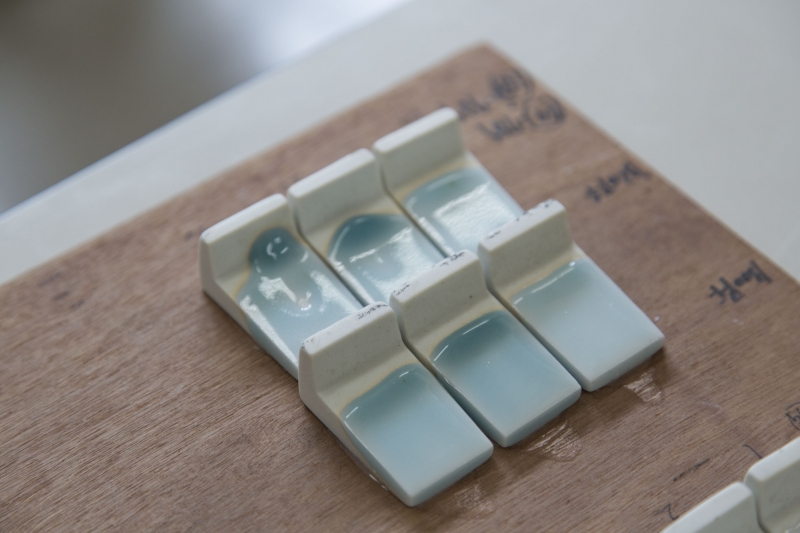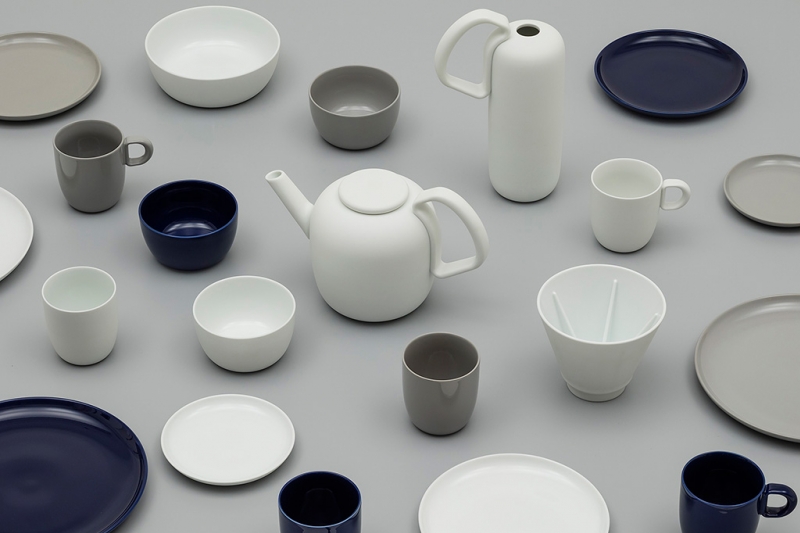Interview: Mr. Shuji Hataishi, Hataman Touen
Hataman Touen has been making high quality porcelain for more than 80 years. The pottery is based in Imari and traditionally specialises in celadonware. Today, Hataman Touen is managed by Shuji Hataishi. Here he tells us about his excitement for a new kind of Aritaware and the evolution that his company has undergone through being being involved in the 2016/ project.
- What led you to become involved in the 2016/ project?
The impact of 1616/ arita japan was very big. I clearly remember the shock when I first saw that collection; it was completely different from any other Aritaware that was being produced at that time. I heard that the collection received criticism, such as; “Where is the Aritaware in this product?” but I had a different reaction, an opposite view: I felt strongly that Aritaware had made positive progress. Afterwards, Mr. Momota (the producer of 1616/ arita japan) asked me very casually if I wanted to work together on a new collection for the Milan Salone. I replied without hesitation; "Yes, I will come with you!" Witnessing the latest design at the recent Milan Salone made a big impression on me and has changed my perspective.
- You have worked with three designers for 2016/. Was yours the biggest amount of work undertaken by the 2016/ potters?
This was the first time our company had collaborated together with designers from overseas and, in addition, we were asked to work with three different designers. I felt a bit of fear, to be honest, but I decided to take on the challenge. We are delighted to have been able to overcome production process difficulties with three different designers and ranges in parallel. Eventually, we produced more than 90 porcelain items at our company for the 2016/ collection.
- Leon Ransmeier’s designs have no painting or applied decoration, working with such a style of porcelain is not typical for Hataman Touen is it?
For the collaboration with Leon, one key idea was proposed: to come up with a product that had a high productivity. In the past, we have focused on handcrafted porcelain that reflects our position as a producer of traditional Nabeshimaware. However, this had become difficult to sustain and we urgently needed to develop products with more efficient productivity. Over two years we developed products and build a relationship of trust, making trials and errors as we went along.
- Can you explain the evolution of Leon’s designs from the initial design proposal to the final prototype?
There was almost no change to the shapes from the initial design proposal. But, with the ambition to make a mass-produced product in mind, we repeatedly corrected small details. For example, making the edge of the vessel just 1mm thinner, or perfecting the form of the base of the vessel to make it easier to hold. We discussed these details until we were both convinced it was perfect.
- Was it difficult to make the handle on the pot?
I had never seen this handle form before. It originated from the idea of representing ‘use’ and ‘hold’ and it was difficult to produce as one entity. Firstly, the handles are very big and would normally deform during firing. However, this has been solved in an unexpected way: Leon proposed that we only apply glaze on the interior of the vessels. And, because the glaze is not applied on the exterior, we can place the handle with its supports on the lower surface of the kiln. The pot is a carefully produced item, demanding detailed finishes for each step of the production process.
- Following the Milan Salone and the first presentation of the 2016/ collection there, have you made any further modifications to the design?
We produced prototypes for the Milan Salone, but as we move towards mass production things change again; the condition of the kiln is different for example. These things are solved during production, maintaining high productivity remains our aim at this stage.
- Where will people be able to buy the porcelain products you have made for 2016/ ?
They will be sold through 2016 Corporation, a company launched by participating trading companies. We will not make direct sales. However, we are involved in the discussions surrounding suitable markets: Leon Ransmeier’s collection will be targeted at the U.S.A market and items designed by Saskia Diez are jewelry and so will be marketed at apparel retailers. I think it is a good idea to select specific sales channels.
- What have you learned through being involved in the 2016/ project?
2016/ is a brand, but also a project that aims to be a platform for Arita. By inviting many people to be involved and by exchanging ideas we have all learnt a lot. Of course I’ve learned much on the technical side about developing products but also a lot about being part of a team. This teamwork is responsible for the success of the 2016/ launch at the Milan Salone. I am the youngest in this team, but age didn’t matter and other potteries have helped me solve technical problems. The quality of the products was improved through discussion, respect, and the sharing of ideas.










